Yi Chun | |
|---|---|
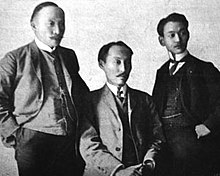 Yi Tjoune, Sangsul Yi and Yi Wi-jong (Hague Secret Emissary Affair) | |
| Born | December 18, 1859 Bukcheong, Korea |
| Died | July 14, 1907 (aged 47) The Hague, Netherlands |
| Occupation(s) | Diplomat, judge, prosecutor |
Notes and references
Notes
- ↑ His name is also spelled "Yi Jun"
Related Research Articles

Gojong, personal name Yi Myeongbok, later Yi Hui, also known as the Gwangmu Emperor, was the penultimate Korean monarch. He ruled Korea for 43 years, from 1864 to 1907, first as the last king of Joseon, and then as the first emperor of the Korean Empire from 1897 until his forced abdication in 1907. His wife, Queen Min, played an active role in politics until her assassination carried out by the Japanese.

Sunjong, personal name Yi Cheok, also known as the Yunghui Emperor, was the last Korean monarch. He ruled from 1907 to 1910 as the second and last emperor of the Korean Empire. Sunjong was elevated to the throne after his predecessor and father, Gojong, was forced to abdicate by the Empire of Japan. Hence, Sunjong has been characterized by historians as being a powerless puppet ruler of the Japanese, reigning for just three years before Korea was officially annexed in 1910.
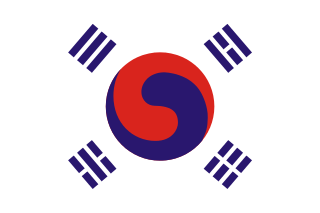
The Korean Empire, officially the Empire of Korea or Imperial Korea, was a Korean monarchical state proclaimed in October 1897 by King Gojong of the Joseon dynasty. The “empire” lasted until Japan's annexation of Korea in August 1910.

Yi Un was the 28th Head of the Korean Imperial House, an Imperial Japanese Army general and the last Imperial Crown Prince of the Korean Empire. Before becoming the heir apparent to Sunjong of Korea, who became the emperor in 1907, Yi Un was known as the title Prince Imperial Yeong (영친왕). In 1910, the Korean Empire was annexed by Japan and Emperor Sunjong was forced to abdicate, and Yi Un married Princess Masako of Nashimoto, the eldest daughter of Prince Nashimoto Morimasa, on 28 April 1920 at Tokyo.

Yi Kang, Prince Imperial Ui, also known as Prince Uihwa, was the second son of Emperor Gojong of Korea and his concubine, Lady Jang, who was a court lady-in-waiting.
Yi Cheong is a member of the former Imperial Family of Korea and was a Korean-Japanese noble during Korea under Japanese rule in 1945–1947. He is a great-great-grandson of Heungseon Daewongun and the eldest son of Yi U and Park Chan-ju.

The Japan–Korea Treaty of 1905, also known as the Eulsa Treaty, Eulsa Unwilling Treaty or Japan–Korea Protectorate Treaty, was made between the Japanese Empire and the Korean Empire in 1905. Negotiations were concluded on November 17, 1905. The treaty deprived Korea of its diplomatic sovereignty and made Korea a protectorate of Imperial Japan. It resulted from Imperial Japan's victory in the Russo-Japanese War in 1905.

Lee Wan-yong, also spelled Yi Wan-yong or Ye Wan-yong, was a Korean politician who served as the 7th Prime Minister of Korea. He is best remembered for signing the Eulsa Treaty and the Japan–Korea Annexation Treaty, which placed Korea under Japanese rule in 1910. Lee's name has since become a byword for the chinilpa, or Korean figures who have collaborated with the Japanese Empire.

The Hague Secret Emissary Affair resulted from Emperor Gojong of the Korean Empire sending confidential emissaries to the Second Peace Conference at The Hague, the Netherlands, in 1907.

Yi Junyong, known as Prince Yeongseon (영선군) was a politician, literati, and member of the Korean Joseon Dynasty's royal family, politicians, and later became a collaborator of Imperial Japan.
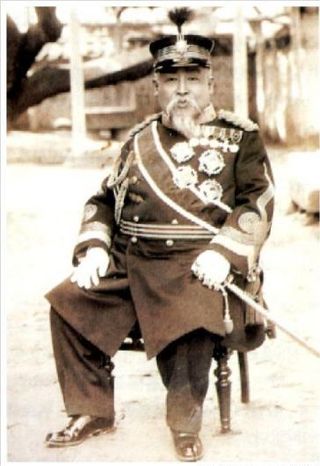
Prince Imperial Heung was a prince of the Joseon dynasty and of the Korean Empire. He was the son of Heungseon Daewongun and the elder brother of Emperor Gojong of Korea. By birth, his original name was Yi Jae-myeon and the art name was U-seok ; after he acquired the "Prince Imperial" title, his name was changed to Yi Hui on 25 August 1910. Five days later, the Japan–Korea Treaty of 1910 became effective, Yi Hui lost the imperial title and received a title "Duke Yi Hui" instead.

Yi Ouitjyong, also known as Yi Wi-jong, was a Korean diplomat and military officer. His name in Russian is Vladimir Sergeyevich Li. His father Yi Beom-Jin was a politician. Yi took part in World War I as a 2nd lieutenant (Podporuchik) of Imperial Russian Army and served on Eastern Front. Post-WWI, Yi joined the Bolsheviks and fought in the Red Army during the Russian Civil War.
The following is a timeline of the Gwangmu Reform, which was a reforms for modernize Korea from the late 19th century to the early 20th century.

Sangsul Yi, also known as Yi Sang-seol, was a Korean civil servant and independence activist.

The Jeonju Yi clan is a Korean clan with the surname Yi. Their bon-gwan is in Jeonju, North Jeolla Province. The clan includes the House of Yi that led Joseon and the Korean Empire.

An Emissary of No Return is a 1984 North Korean historical drama film directed by Shin Sang-ok and Choi Eun-hee. Shin also wrote the script. It was the first of four films Shin and Choi made during their abduction to North Korea under the orders of Kim Jong Il. Adapted from Bloody Conference(혈분만국회 ), a play allegedly written by Kim Il Sung during his guerrilla years, the film retells the dramatized story of the Hague Secret Emissary Affair. The affair ensued when the Korean emperor king Gojong sent three unauthorized emissaries to the talks of the Hague Convention of 1907.
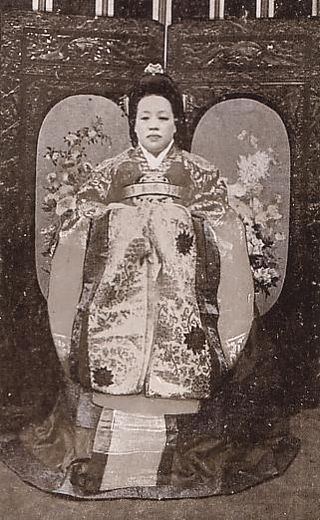
Imperial Noble Consort Sunheon, of the Yeongwol Eom clan, personal name was Eom Seon-yeong, was a concubine of Emperor Gojong of Korea.

Yi Jong-geon was a lieutenant-general of the Imperial Korean Army. He was ennobled as Baron of Japan during the Korea under Japanese rule. After March First Movement, Yi tried to return his title but he failed.

Yi Yong-ik was an official, and politician of the Korean Empire. As an official, Yi was very interested in education. He established Bosung College, which later became Korea University. As an officer he was also a lieutenant general of the Imperial Korean Army.
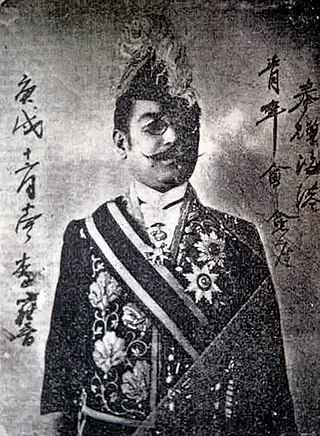
Yi Bum-jin was a Korean diplomat, official, and politician during the reign of Gojong. He committed suicide after Korea was annexed by Japan in 1911.
References
- 1 2 3 이준(李儁). Encyclopedia of Korean Culture (in Korean). Retrieved 2023-08-22.
- ↑ 우리역사넷. contents.history.go.kr. Retrieved 2023-08-22.
- ↑ 이준[李儁]. Historynet. Retrieved 2023-08-22.
- ↑ "TAG: YI JUN – 이준". Korea Stamp Society. 2019-07-06. Retrieved 2023-08-22.
- ↑ "Yi Jun Peace Museum | DenHaag.com". denhaag.com. Retrieved 2023-08-22.
| International | |
|---|---|
| National | |